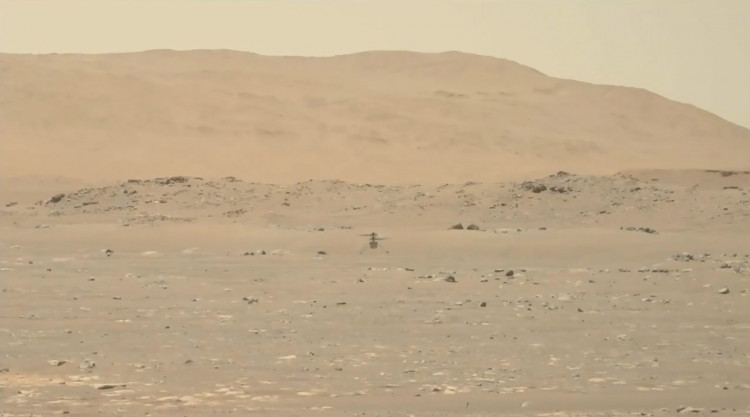The Ingenuity Mars Helicopter's 13th flight, captured on video by NASA's Perseverance Mars rover on Sept. 4, provides the most detailed look yet at the rotorcraft in action.
One video clip of Flight 13 captured by the rover's two-camera Mastcam-Z shows the majority of the 4-pound (1.8-kilogram) rotorcraft's flight profile. The other shows a close-up of the helicopter's takeoff and landing, which was captured as part of a science observation to measure the dust plumes it generates.
Ingenuity is currently preparing for its 16th flight, which will take place no earlier than Saturday, Nov. 20, but the 160.5-second Flight 13 stands out as one of the most difficult. It entailed flying into different terrain within the "Sétah" geological feature and taking multiple images of an outcrop for the rover team.
The images, taken from a height of 26 feet (8 meters), add to those collected during Flight 12, giving Perseverance scientists and rover drivers valuable information.
"The value of Mastcam-Z really shines through with these video clips," Justin Maki, deputy principal investigator for the Mastcam-Z instrument at NASA's Jet Propulsion Laboratory in Southern California, said.
"Even at 300 meters [328 yards] away, we get a magnificent closeup of takeoff and landing through Mastcam-Z's right eye."
Though the view from Mastcam-left Z's eye shows less of the helicopter and more of Mars than the right, the wide angle shows the Ingenuity team's unique approach to ensuring the flight's success.
Ingenuity kicks up a small plume of dust during takeoff, which the right camera captures moving to the right of the helicopter during ascent. The chopper executes a slight rotation after climbing to its projected maximum height of 26 feet (8 meters) to line up its color camera for scouting.
The Ingenuity then flips over, allowing the thrust of the rotors to propel it horizontally through the thin Martian air before disappearing offscreen. The rotorcraft returns later and lands close to where it took off. To avoid a ripple of sand at the end of Flight 12, the crew chose an alternative landing place, about 39 feet (12 meters) from takeoff.
Ingenuity, along with NASA's other Mars spacecraft, went silent in October after Flight 13, when the Red Planet and Earth were on opposite sides of the Sun, preventing most communications.
Following that, Ingenuity conducted a brief experimental flight test before embarking on Flight 15, which kicked off the multi-flight trek back to the region of "Wright Brothers Field," where it all began back in April.





